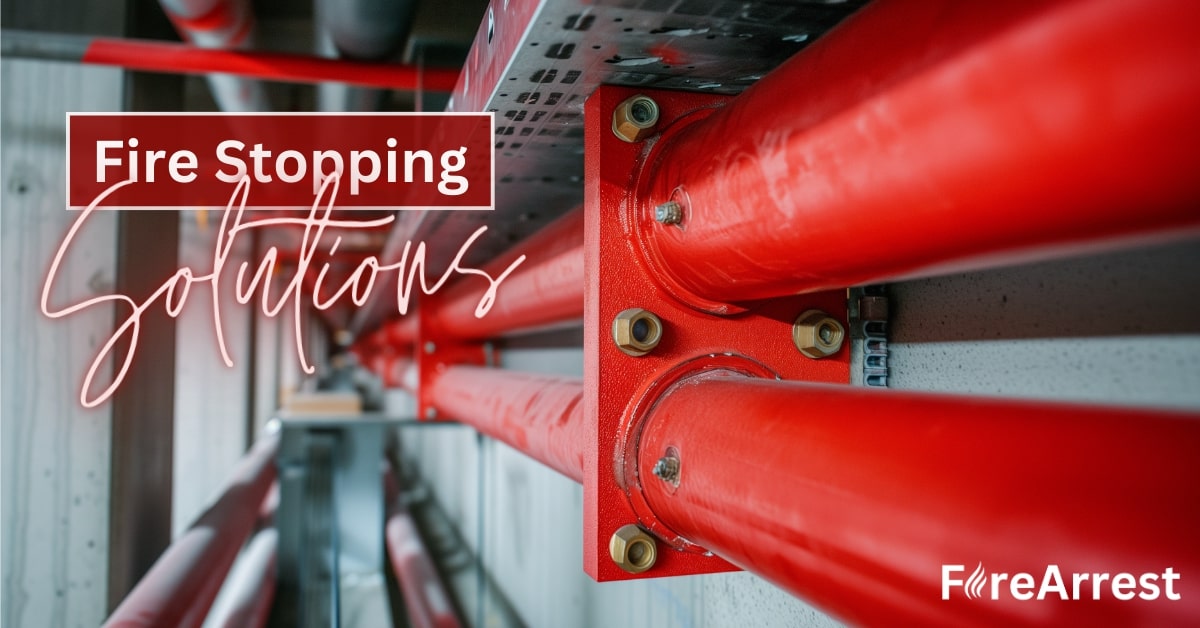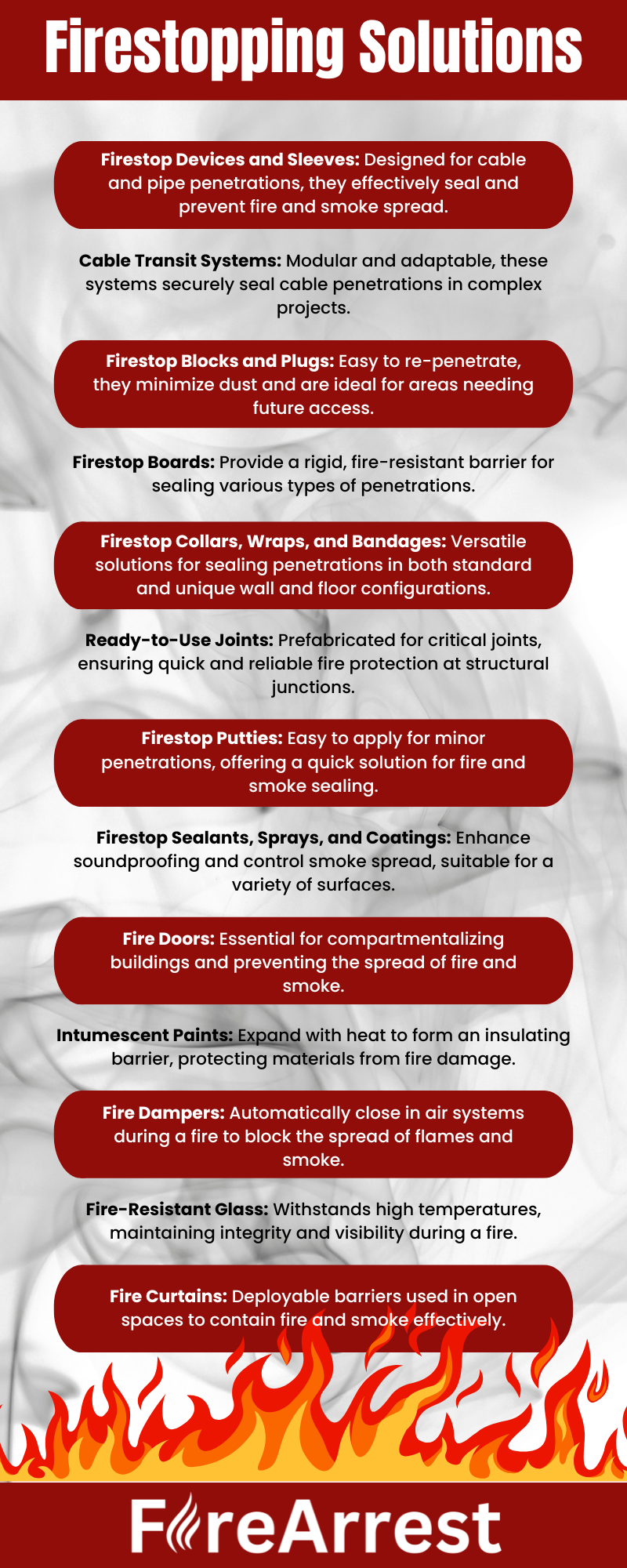Fire stopping is an essential aspect of building safety, pivotal in safeguarding lives and property against the devastating impact of fire. At its core, fire stopping is the practice of sealing any openings in buildings to prevent the spread of fire and smoke, as well as using FireArrest to record work with full compliance. This includes gaps around pipes, ducts, and electrical conduits, as well as spaces between floors and walls. The importance of fire stopping solutions cannot be overstated; it is a critical component in maintaining the integrity of a building’s fire resistance rating and plays a vital role in containing a fire at its point of origin, thereby limiting its spread and providing occupants with crucial time to evacuate safely.

Types of Fire Stopping Solutions
The realm of fire stopping solutions is diverse, encompassing a variety of products each designed to address specific fire safety needs in construction. Here’s an overview of the key types of fire stopping solutions:





